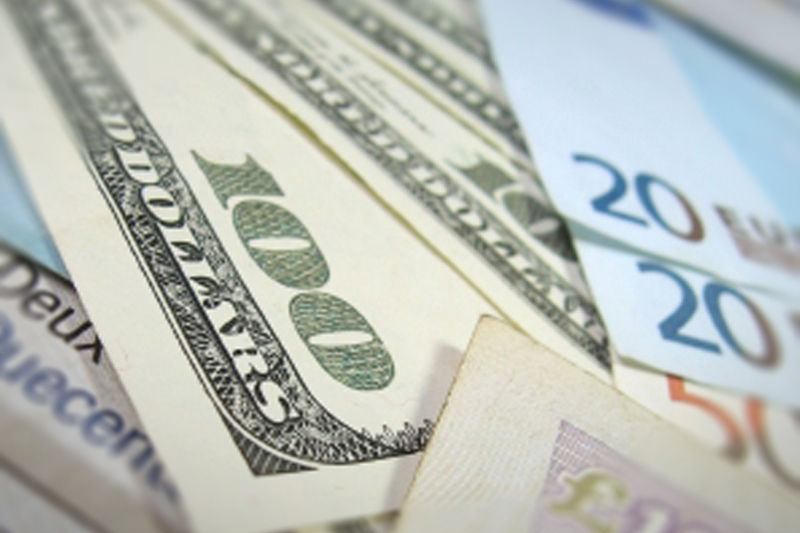Investing.com -- EUR/USD pared sharp losses to close slightly lower on Thursday, after tumbling early in the U.S. session amid dovish signals from European Central Bank president Mario Draghi that added stimulus measures could be implemented before the end of the first quarter.
The currency pair traded in a broad range between 1.0778 and 1.0992, before settling at 1.0867, down 0.22% on the session. Despite the wild fluctuations in Thursday's session, EUR/USD has been trapped in range-bound trade in the first three weeks of the new year remaining at a level between 1.07 and 1.10. After falling by roughly 10% against its American counterpart in 2015, the euro is up slightly against the dollar in January by 0.11%.
EUR/USD likely gained support at EUR/USD at 1.0538, the low from December 3 and was met with resistance at 1.1352, the high from Oct. 22.
At a closely-watched meeting in Frankfurt, the ECB's Governing Council held its benchmark interest rate at a record-low of 0.05% and its rate on its marginal lending facility at 0.30%, in line with consensus forecasts. The ECB also left its deposit rate unchanged at minus 0.3%, one month after cutting it further into negative territory by 10 basis points. Analysts also expected the deposit rate to remain steady at negative 0.3%.
Citing increased downside risks in Emerging Markets, extreme volatility in global financial and commodity markets and weak inflation expectations, Draghi said the Governing Council will reconsider its monetary policy stance when it meets next in two months. Draghi appeared particularly concerned with the effect of falling oil prices on euro zone inflation, which is currently at 0.2% -- considerably below the ECB's targeted goal of 2.0%. Since the Governing Council last met in December, Draghi noted that a variety of indicators it uses to gauge inflation expectations have declined noticeably.
The euro has struggled against the dollar since last January when the ECB announced the launching of a comprehensive Quantitative Easing program aimed at staving off deflation and bolstering growth in the area. The program involves the purchase of €60 billion a month of assets by the central bank in order to increase the amount of money supply available for banks to lend money to businesses and individuals. Large-scale easing initiatives also typically push interest rates lower, reducing domestic investments by foreign purchasers and weakening the local currency against its main rivals. Interest rates throughout the euro zone will likely remain at low levels for some time, Draghi added.
The fluctuations in the pair on Thursday contrast starkly from the ECB's last meeting when the central bank rattled global foreign exchange markets by approving limited easing measures that fell short of market expectations on Dec. 3. In that session, the euro surged more than 3% to a one-month high at 1.0936, completing its strongest one-day move in six years. At a press conference following Thursday's rate decision, Draghi dismissed suggestions that the Governing Council was split over its decision in December to cut the deposit rates and extend the length of the asset-purchasing program through March, 2017.
While the ECB has mulled pushing the deposit rate further into negative territory, the Federal Reserve is in the midst of its first tightening cycle in a decade after abandoning a Zero Interest Rate Policy at a historic meeting last month. Investors await the completion of next week's two-day Federal Open Market Committee meeting for further indications of potential divergence between the ECB and the U.S. central bank.
The U.S. Dollar Index, which measures the strength of the greenback versus a basket of six other major currencies, soared more than 0.60% to an intraday high of 99.89, before falling back to 99.16 at the close. The dollar remains near a 12-month higher from December, when the index eclipsed 100.00.
